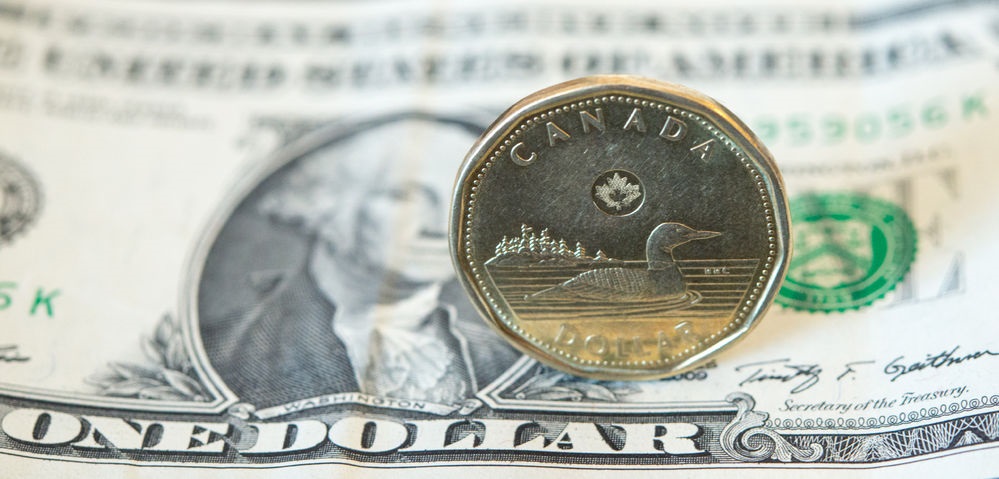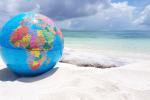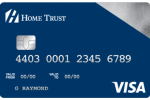
LAST UPDATED: December 8, 2024
A weaker Canadian dollar is a major concern for snowbirds who normally winter in the southern United States.
However, a lower Loonie doesn’t have to be a reason to impede or cancel your plans, as there are a number of ways to mitigate the effects of a lower dollar and to fund your snowbird lifestyle.
If you own your own place, you’ll have fixed costs such as condo fees, golf club fees, taxes, utilities, and insurance. You can offset the increase in costs by renting out your unit for a month or two and shortening your stay. Some Canadians have even been taking advantage of rising prices in the Sunbelt and the currency differential to cash out and sell their U.S. properties.
For those of you interested in cutting costs while still being able to enjoy warm winters away, here are our top 12 tips for offsetting the weaker Canadian dollar:
Top Money-Saving Tips for Canadian Snowbirds
Create a household budget
First and foremost, you should create an annual household budget with your snowbird goals in mind. You’ll need to identify all income sources, as well as monthly expenses at home and estimate how much you can afford in your travel budget for some time away over the winter.
Remember, certain costs like groceries, haircuts, gas (if you plan on driving), etc... will continue while you are in your winter destination. Depending on where you go, they may actually be cheaper than back home.
You’ll also want to look for any monthly expenses at home that you’ll be able to suspend or reduce while you’re away (i.e. cable TV, phone, internet, cleaning services, auto insurance, utilities, etc.). However, on the home and auto insurance front, you’ll want to do some research to ensure you’re still meeting the obligations required under your insurance policy.
Don’t forget to add in the cost of travel medical insurance coverage while you’re away, as this is a must for all Canadians - no matter where you are travelling to.
Based on your budget, you should be able to get an idea of how much money you have available to go away for the winter.
- Save on foreign exchange
For larger or ongoing conversion amounts consider using a boutique currency exchange service like Snowbird Advisor's FX program which offers significantly lower exchange rates than the big banks and can result in up to 2% savings of FX costs. You can also buy U.S. dollars monthly over the year or buy a larger amount whenever the Canadian dollar goes up a few cents, which can make a big difference.
For everyday spending, consider a Canadian credit card with no foreign transaction fees like Home Trust's Preferred VISA card or a U.S. Dollar credit card issued by a Canadian financial institution, which can save you 2.5% – 5% in foreign exchange fees.
Many Canadians have also chosen to open U.S. dollar cross-border bank accounts with one of several Canadian banks that operate in the United States, some of whom offer no-cost transfers from your Canadian U.S. dollar account to your U.S. dollar account in the United States. - Getting there
If you normally fly back and forth to your place in the sun, consider using points instead of cash to pay for your flight. If you live near the border, look into airfares from U.S. border airports. Even with the exchange rate, some U.S. discount carriers offer extremely cheap fares. Book well ahead for the best deals.
Driving will be the cheapest option. The other benefit of driving is you’ll have your own vehicle during your stay and thus no car rental or local transportation costs. - Consider affordable destinations
If you’re a renter, there’s greater value for Canadians willing to consider U.S. snowbird destinations other than the traditional hotspots, as well as international snowbird destinations where the exchange rate is more favourable, such as Mexico, Portugal, Costa Rica, Panama - or even Colombia. These options can provide a lower cost of living when it comes to snowbird rental accommodations, activities, dining and more.
While not ideal, some Canadians chose to stay in Canada, heading to Vancouver, Victoria or the lower B.C. interior. It’s not hot, but they have an early spring and the weather is pleasant enough for outdoor activities. Two benefits to staying in Canada are that all costs are in Canadian dollars and you won't need private health insurance for travel outside Canada - although you should still consider purchasing out-of-province travel medical insurance to cover possible gaps in your provincial health coverage. - Eat out wisely
Instead of going out to nice restaurants several nights a week, plan to change to lower-cost eateries or eating in more often. Dining out in low-cost restaurants and even some of the healthier fast food restaurants is a good option, as are ethnic restaurants. Take advantage of Happy Hour for cheaper drinks and half-price appetizers that often accompany them. With portions so large in U.S. restaurants, many couples can share an appetizer and an entrée and still head home full, or order larger portions and take half home for tomorrow’s meal. - Save on groceries, wine and liquor
Even with the exchange rate, most grocery and household supply items are cheaper than in Canada. Local produce is plentiful and inexpensive and there are lots of lower cost choices for where to buy. Look for Walmart, Costco, Sam’s Club, Trader Joe’s, and Target for cheaper groceries. It’s also fun and less costly to visit farmer’s markets, as well as local Amish and Spanish markets and farm stores. In addition, you can buy the local paper or look online for special offers – there’s no end to them every week.
There’s more good news when it comes to wine and liquor. You can buy wine in the U.S. for less than what you will pay in Canada. Good wines, lots of them, are available for under $10 USD if you shop in wine stores or at Costco. Beer is cheaper too, and so is liquor. There are plenty of wine and liquor stores to choose from and it’s a very competitive field, so shop around and find your own favourite discount wine and liquor store. A shout out to Trader Joe’s who have some of the most reasonable prices for imported wines. - Seek out free and low-cost activities
Most attractions offer seniors discounts and discount days. Explore the vintage, consignment and charity shops for great finds to furnish a new place. Find public golf courses that have discount days or tee times, and sometimes include breakfast or lunch. Get your exercise walking and swimming and check out the local gyms for temporary memberships if your complex doesn’t have its own gym. Many communities have public tennis courts. You can also get involved in community activities, volunteering and local snowbird groups. - Look for low-cost entertainment options
Many communities have lots of festivals throughout the winter season. Visit flea markets, fairs, rodeos, and concerts in the park, and seek out discount tickets to theatres and events. Major league baseball spring training games are a fraction of the cost of seeing the teams during the regular season. There are seniors’ rates at the movies and some communities have discount movie houses. And you can always watch your favourite streaming services or try some new ones while you're away for a low monthly fee. Phone and long-distance options
Canada – U.S. plans from Canadian mobile phone carriers have come down in price significantly over the past few years, so shop around for a plan that includes unlimited roaming while you are in the U.S. For example, Snowbird Advisor has partnered with TELUS to provide members with preferred pricing on mobile phone plans for snowbirds that include unlimited roaming in Canada, the U.S., Mexico and the Caribbean, depending on your needs.Buying long-distance cards once you are in the U.S. can also be a good option, as they’re extremely reasonable and you can talk for hours and top them up automatically.
You can also take advantage of free internet calling with apps like Facetime, What's App, Zoom, Teams, Skype, etc. and use social media to keep in touch and chat with friends and family.
- Shorten your trip
This is nobody’s favourite option, and while not ideal, cutting your trip shorter than in previous years is still much better than not getting to escape the cold at all. Rent out your vacation home when you’re not there
If you already own a vacation home in a snowbird destination, consider renting it out for the months when you are not there. Some snowbirds even rent out their home for part of the winter (when rents are high) to generate income. If you go this route, you’ll want to look into the income tax implications to make sure it’s worth it financially.
Rent out your home in Canada while you’re away for the winter
Another way to generate income to help support your snowbird lifestyle is to rent out your Canadian property when you’re not there. While this takes some time, effort and planning, the additional income can help cover many of the costs of your winters away. With sites like Airbnb and VRBO, it’s easier than ever to list and rent out your home.
However, if you live in a condo you may find that your building restricts short-term rentals, so be sure to check the rules first.
















